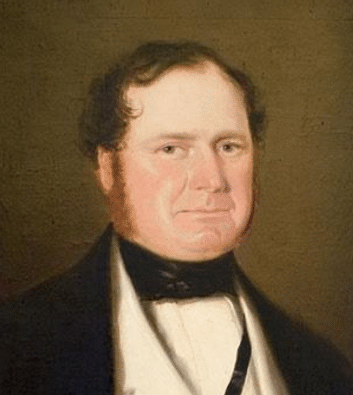Merriman was said to be one of the ring leaders of the attack on William Pitt Faithful’s shepherds at the Broken River in April 1838 where 8 shepherds were killed. The killings caused great alarm among overlanders and halted settlement along the Sydney road for some months. Fears of further attacks struck terror into overlanders and their servants.
What led to the attack has always been in dispute. Some sources believe it was due to the shepherd’s liaison with Indigenous women while others say it was an argument about sheep. Whatever the cause, the Blacks continued attacks upon WP Faithful and George Faithfuls men and animals for some time. It is telling to note that their neighbours did not suffer as they did – Rev Joseph Docker. (1)
William Pitt Faithfull (1806-1896) was born on 11 October 1806 at Richmond, New South Wales, the eldest son of William Faithful and his wife Susannah, née Pitt. He left school at 15 and entered the office of his uncle, Robert Jenkins, a Sydney merchant and after his uncle died he worked for five years as an overseer on the property of his aunt, Mrs Jemima Jenkins who lived near Illawarra. Mrs Jenkins husband died from a horse fall in May 1822 about the same time WP Faithful arrived at his aunt’s. (2) Perhaps WP was sent by the family to help his aunt after the death of her husband.
In 1827 WP Faithful applied for land with acreage and the land board assessed his capital at £2232 and in October he was granted 1280 acres (518 ha) on the Goulburn plains. The property became known as Springfield.
In early 1838 WP Faithful decided to send sheep to the newly opened Port Phillip district in the hope of setting up a new station. His brother George Faithful intended to do the same and agreed to keep an eye on his WP Faithful’s men and animals.
According to a newspaper article of 1910, WP Faithful’s overlanding party was heading to the ‘Goulburn River, where it was understood good sheep stations were to be had in close proximity to the Melbourne market.’ (2.1)
In charge of WP Faithful’s men and sheep was a ticket of leave convict named James Crossley. By all accounts, the journey was uneventful until they arrived at the Ovens River. They camped near Col Henry White who was intending to set up a station on the Ovens River. (3)
Three incidents occurred somewhere near the Ovens River that may have caused the attack at the Broken River.
- Crossley allowed his men to enter into a competition of skill with Indigenous men pitting gun against spear as told by Lady Jane Franklin. (4)
- Crossley’s men fired guns at Indigenous people as told by ticket of leave convict William McKay fifteen years after the event. William McKay said while they were at the Ovens River a party of Blacks speared cattle and were fired upon. These same Blacks followed them for two days until they came to the Broken River. The Blacks attacked them before sunrise. (5)
- Crossley and his men had a sexual encounter with Indigenous women. In 1883, Historian George Rusden wrote, ‘The men with the sheep quarrelled with the natives at the Broken River. The cause was the usual one. The convict men had trafficked with the women.’ (6)
On 11th April 1838, a group of about twenty Blacks attacked Crossley’s camp at Broken River. Reports numbered the attackers at between 150 (James Crossley) and 600 (JC Bourke) This figure brought speculation with many wondering how it was that any of the 18 shepherds survived against such odds.
It is more likely the number of attacking men was twenty, a figure noted by one of the surviving shepherds, Patrick Drain, who said that twenty indigenous men had followed them all the way from the Murray River. (7)
Official reports decided the attack was over an argument about sheep and the Blacks desire to plunder the provisions in the wagon. (3)
A great fear spread through the Port Phillip district after the attack with overlanders fearing the same could happen to them. JC Bourke wrote that a great many men and beasts massed at the crossing place on the Murray waiting to make the journey together. Bourke wrote that when they finally set out the land was covered in a sea of men, armed to the teeth, sheep, cattle, horses, oxen and drays seven miles long. (8)
The loss of eight men and provisions forced WP Faithful to travel to the Port Phillip area to salvage what he could of the expedition.
Fear of attacks by Indigenous people became foremost in people’s minds when travelling near the Ovens River. Col Henry White abandoned his plans to set up a station on the Ovens and moved to Sunday Creek near Tallarook. George Faithful decided to stay on the Ovens Plains but the next we hear of WP Faithful is when he gives a statement to police after a second incident.
This incident occurred somewhere near William Bowman’s Sutton Grange station as one of Bowman’s men was also involved. (3)
WP Faithful’s overseer, James Crossley and Bowman’s stockman, Benjamin Reed discovered the location of a missing bullock driver named George Graham. (3)
They alerted WP Faithful who came to the scene and witnessed the mutilated body of George Graham being pulled from a water hole. (3)
Both William and George Faithful had considerable trouble with indigenous people. More so than their neighbours as stated by Rev J Docker. (1)
Lady Franklin wrote her opinion of WP Faithful saying he, ‘seemed a person of no great intelligence—a giant in size.’ (4)
In 1840 two of WP Faithful’s shepherds were killed by Blacks at Wermatong, near Corryong. One inside the hut and one outside. Their bodies were discovered when they failed to arrive at a designated supply stop with Faithful’s men who had come to deliver provisions. (9)
When the shepherds failed to show up the men continued on with the supplies to see what had held them up. At Wermatong they found the bodies of the shepherds at a place called shepherds flat. (9)
The men returned to Tumbarumba and reported the murders to police who arrived at the scene a few days later bringing with them two Black trackers. The trackers found spear imprints in the ground where they said the murderers had stood with their spears upright for a time while in discussion. (9)
The white community set about in reprisal killings and one report spoke of a wagon load of bodies being taken to Biggara and burnt. At Ournie, at a place called Boat Point, another massacre occurred. Indigenous people were pushed towards an elbow in the river and those who could not get across climbed trees but were shot dead, their bodies falling from the upper branches into the water. (9)
Tom W Mitchell wrote about the incident many years afterwards saying, ‘The blacks inhabiting the mountains of our Upper Murray district slipped down from Mt. Wermatong (Wermatong-spear handle) to massacre a party of the Faithful family at Murdering Flat on the bank of the River Murray itself just below Tintaldra.’ (10)
One theory of why these shepherds were killed was that it was a reprisal for the poisoning of flour eaten by Indigenous people. Apparently, the Blacks procured the flour from a hut at Thougla creek. It is not recorded how many Indigenous people died as a result of the lacing of the flour with strychnine. (9)
William Pitt Faithful was in his late 30s when he married Mary Deane in 1844. Although at the time he was regarded as middle-aged, marrying ‘late’ was not uncommon in colonial Australia. Men outnumbered women in the colony and finding a suitable and willing bride could be difficult, especially for those living on isolated pastoral properties. (11)
William was in luck when he met Mary, an educated, cultured and resourceful woman. The couple married on 20 January 1844, at St James’ Church, Sydney. Following the wedding, Mary left Sydney life to join her husband on Springfield sheep station, near Goulburn, New South Wales. Her mother, sister and nephew accompanied her.
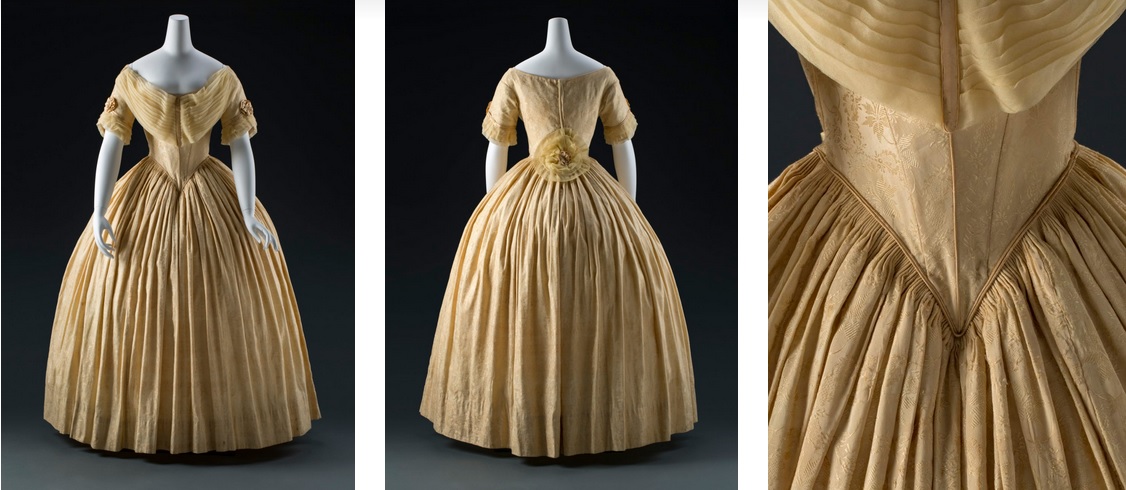
This is believed to be Mary’s wedding dress: its sloping shoulders, pointed, fitted waist and bell-shaped skirt is typical of the mid-1840s, and the luxurious silk damask was a fashionable choice for brides who could afford it. The full collection of Faithful family memorabilia is at the National Museum Australia.
Over the next 15 years, Mary and William had six sons and three daughters. As the Faithfull family grew, so did Springfield. By the 1850s it was a prosperous merino stud with an elegant homestead.
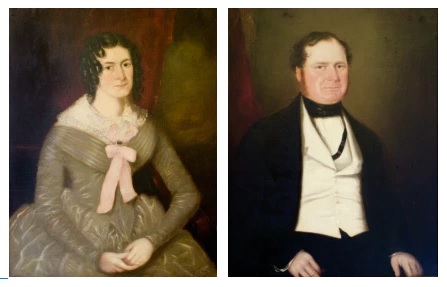
Mary and William Pitt Faithful
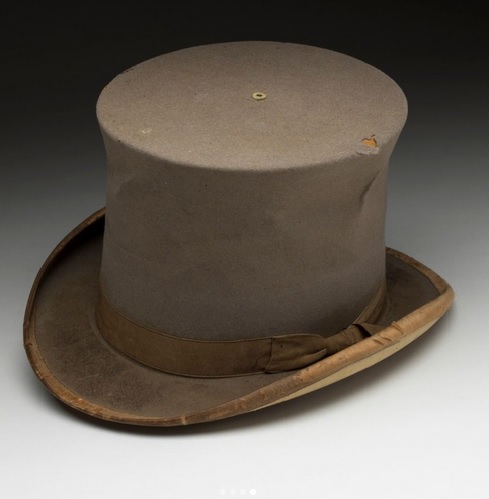
Top hat worn by William Faithfull, about 1865-1890, Springfield-Faithfull collection.
The National Museum Australia has many items from the Faithful family in its collection.
This medicine chest is made of rosewood and mahogany and lined with velvet. The chest is an English domestic model, typical of those made in large quantities from 1820 to about 1900 and comes from the Faithful’s Springfield estate.
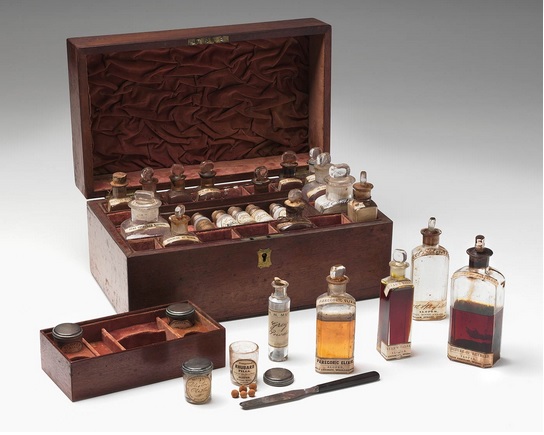
I am, acquainted with the Port Phillip district, and I know the blacks to be hostile to the whites; they speared several of my sheep at different times, altogether about fifty, and on one occasion, murdered one of my shepherds. By a letter which I lately received from my brother, I learn that the blacks have again made their appearance in large bodies, as many as three hundred having been seen together; they refused to move or disperse, but on the appearance of one mounted. policeman, they immediately disappeared.
WP Faithful is considered to be the author of this letter printed in The Colonist (Sydney, NSW : 1835 – 1840) written, Sat 9 Mar 1839
WP Faithfull died at Springfield on 24 April 1896 and was buried there by the Anglican bishop of Goulburn. He was survived by five sons and three daughters. He left an estate worth £335,253 with Springfield, grown to over 20,000 acres (8094 ha), Brewarrina, and land in Melbourne, Wangaratta, Mittagong and Sydney. The Springfield stud was left to his youngest son, Lucian, in whose hands it remained until he died in 1942, when it went to Lucian’s daughter, Mrs Maple Brown. It is claimed to be the oldest registered merino flock in Australia in the possession of one family.
THE REFERENCES;
(1) The Two Lives of Joseph Docker, JM McMillan
(2) Australian Dictionary of Biography – William Pitt Faithful
(2.1) EARLY MELBOURNE INCIDENTS IN 1838-9 By “Old Chum.” Newspaper article from 1910
(3) Historical Records of Victoria Vol 2A, Chapter 12, Attacks on the Overland Routes to Port Phillip.
(4) This Errant Lady, Diary of Lady Jane Franklin, 1839
(5) The North Eastern Ensign, Fri 30th Aug, 1907. Article titled ‘Further Information.’
(6) History of Australia, vol. 2 page 228. 1883.
(7) Yass Court Deposition Register, 1 June 1838.
(8) Letters written by JC Bourke the mailman of 1838, letters held by Royal Historical Society of Victoria.
(9) Corryong Museum private stories.
(10) Tom Mitchell, writings.
(11) The Australian Museum Collection regarding WP Faithful & Springfield station

